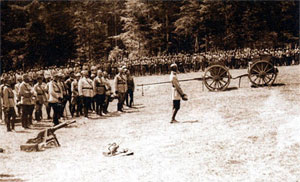The History of Romania
Part 3: National Revival, Union and Independence
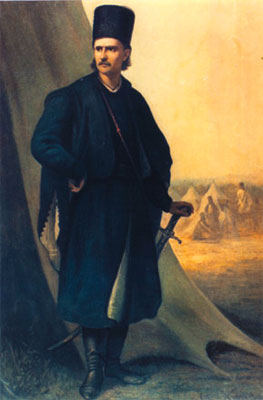
|
Leader of the 1821 Romanian Revolution |
The quest for renewal in Wallachia was expressed in the revolution led by Tudor Vladimirescu (1821), which broke out at the same time with the Greek's movement for liberation.
Although the Ottoman and Czarist troops occupied the Danube principalities that same year, the sacrifices made by the Romanians brought about the abolition of the Phanariot regime and native voivodes were again appointed on the thrones of Moldavia and Wallachia. The peace treaty of 1829 signed at Adrianople (today Edirne) ended the Russian-Turkish conflict of 1828-1829, which had broken out in the final stage of the war for national liberation fought by the Greeks; this treaty greatly weakened the Ottoman suzerainty, but it increased Russia's 'protectorate.' Now that trade was freed, Romanian cereals began to penetrate European markets. Under Pavel Kiseleff, the commander of the Russian troops that occupied the two Romanian principalities (1828-1834), quasi-identical Organic Regulations were introduced in Wallachia (1831) and Moldavia (1832); until 1859 these Regulations served as fundamental laws (constitutions) and they contributed to the modernisation and homogenisation of the social, economic, administrative and political structures that had started in the preceding decades. Therefore, in the first half of the 19th century, the Romanian principalities began to distance themselves from the Oriental Ottoman world and tune into the spiritual space of Western Europe. Ideas, currents, attitudes from the West were more than welcome in the Romanian world, which was undergoing an irreversible process of modernisation. Now the awareness that all Romanians belong to the same nation was generalised and the union into one single independent state became the ideal of all Romanians.
Union and Independence
The winds of 1848 also blew over the Romanian principalities. They brought to the centre-stage of politics several brilliant intellectuals such as Ion Heliade Radulescu, Nicolae Balcescu, Mihail Kogalniceanu, Simion Barnutiu, Avram Iancu and others.
In Moldavia the unrest was quickly cracked down on, but in Wallachia the revolutionaries actually governed the country in June-September 1848. In Transylvania the revolution was prolonged until as late as 1849. There, the Hungarian leaders refused to take into account the claims of the Romanians and they resolved to annex Transylvania to Hungary; this led to a split of the revolutionary forces between the Hungarians and the Romanians. The Hungarian government of Kossuth Lajos attempted to crack down on the fight of the Romanians, but he encountered the resolute armed resistance of the Romanians in the Apuseni Mountains, under the leadership of Avram Iancu.
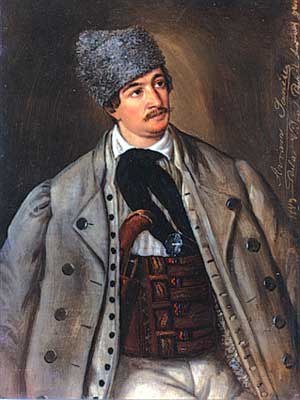
|
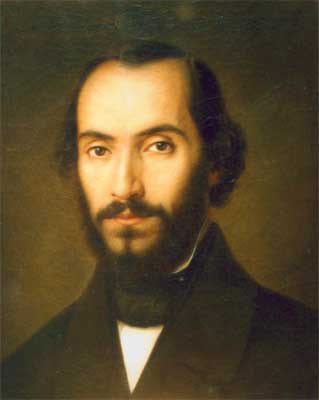
|
|
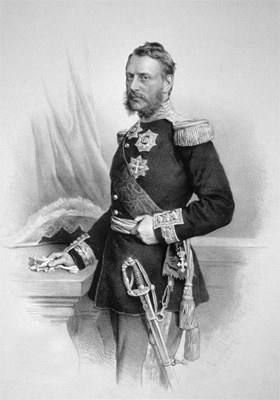
|
Alexandru Ioan Cuza (1859-1866)
|
Although the brutal intervention of the Ottoman, Czarist and Habsburg armies was successful in 1848-1849, the renewal tide favouring democratic ideas spread everywhere in the next decade.
Russia was defeated in the Crimean War (1853-1856) and this called into question again the fragile European balance. Owing to their strategic position at the mouth of the Danube, as this waterway was becoming increasingly important to European communications, the status of the Danube principalities became a European issue
at the peace Congress in Paris (February-March 1856). Wallachia and Moldavia were still under Ottoman suzerainty, but now they were placed under the collective guarantee of the seven powers that signed the Paris peace treaty; these powers decided then that local assemblies be convened to decide on the future organisation of the two principalities. The Treaty of Paris also stipulated: the retrocession to Moldavia of Southern Bessarabia, which had been annexed in 1812 by Russia (the Cahul, Bolgrad and Ismail counties); freedom of sailing on the Danube; the establishment of the European Commission of the Danube; the neutral status of the Black Sea. In 1857 the 'Ad-hoc assemblies' convened in Bucharest and Iasi under the provisions of the Paris Peace Congress of 1856; all social categories participated and these assemblies unanimously decided to unite the two principalities into one single state. French emperor Napoleon III supported this, the Ottoman Empire and Austria were against, so a new conference of the seven protector powers was called in Paris (May-August 1858); there, only a few of the Romanians' claims were approved. But the Romanians elected on January 5/17, 1859 in Moldavia and on January 24/February 5, 1859 in Wallachia Colonel Alexandru Ioan Cuza as their unique prince, achieving de facto the union of the two principalities.
The Romanian nation state took on January 24/February 5, 1862 the name of Romania and settled its capital in Bucharest.
Assisted by Mihail Kogalniceanu, his closest adviser, Alexandru Ioan Cuza initiated a reform programme, which contributed to the modernisation of the Romanian society and state structures: the law to secularise monastery assets (1863), the land reform, providing for the liberation of the peasants from the burden of feudal duties and the granting of land to them (1864), the Penal Code law, the Civilian Code law (1864), the education law, under which primary school became tuitionfree and compulsory (1864), the establishment of universities in Iasi (1860) and Bucharest (1864), a.o.
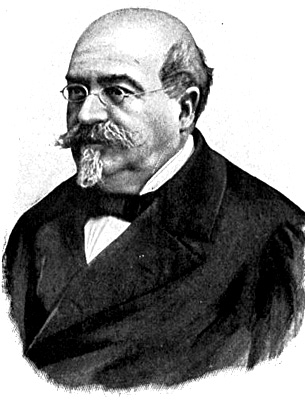
|
Father of the program to make Romania a modern country |
After the abdication of Alexandru Ioan Cuza (1866), Carol of Hohenzollern-Sigmaringen, a relative of the royal family of Prussia, who was supported by Napoleon III and Bismark, was proclaimed on May 10, 1866, following a plebiscite, ruling prince of Romania, with the name of Carol I.
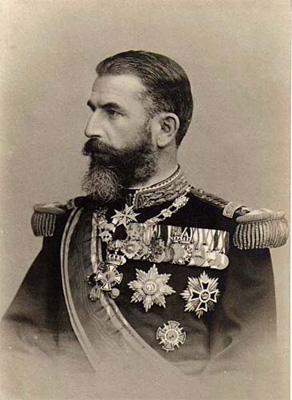
|
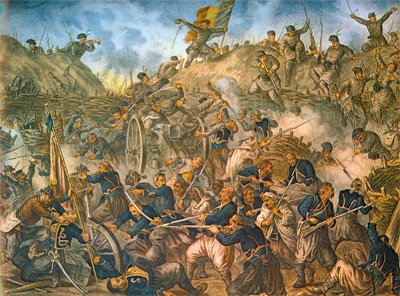
|
Attack of Grivita stronghold |
The new Constitution (inspired from the Belgian one of 1831), which was promulgated in 1866 and was in use until 1923, proclaimed Romania a constitutional monarchy. In the next decade the struggle of the Romanians to achieve full state independence was part of the movements that took place with other peoples in the south-east of Europe - Serbs, Hungarians, Montenegrins, Bulgarians, Albanians - to cut off their last ties to the Ottoman Empire. Within a favourable international framework - in 1875 the Oriental crisis broke out again and the Russo-Turkish war started in April 1877 - Romania declared its full state independence on May 9/21, 1877. The government led by Ion C. Bratianu, in which Mihail Kogalniceanu served as Foreign Minister, decided, upon the Russian request for assistance, to join the Russian forces that were operative in Bulgaria. A Romanian army, under the personal command of Prince Carol I, crossed the Danube and participated in the siege of Pleven; the result was the surrender of the Ottoman army led by Osman Pasha (December 10, 1877).
The independence of Romania, similarly to that Serbia and Montenegro, as well as the union of Dobrudja with Romania were recognised in the Russian-Turkish peace treaty of San Stefano (March 3, 1878). Upon the insistence of the great powers, an international peace Congress was held in Berlin (June-July 1878), which acknowledged and maintained the status that Romania had proclaimed by herself more than a year before; it also re-established, after a long period of Ottoman rule, Romania's rights over Dobrudja, which was re-united to Romania. But at the same time Russia violated the convention signed on April 4, 1877 and forced Romania to cede the Cahul, Bolgrad and Ismail counties of Southern Bessarabia.
On March 14/26, 1881, Romania proclaimed itself a kingdom and Carol I of Hohenzollern-Sigmaringen was crowned King of Romania.
After gaining its independence, the Romania state was the place to which the hopeful eyes of all Romanians who lived on the lands still under foreign occupation turned. The Romanians in Bukovina and in Bessarabia were facing a systematic policy of assimilation into the German and Russian worlds, respectively. Immigration of foreign peoples was directed to their territory. The Romanian enclaves in the Balkan Peninsula had increasing difficulties in opposing the denationalisation tendencies. At the turn of the 20th century, the Romanians were a people with over 12 million inhabitants, of whom almost half lived under foreign occupation.
At the same time in Transylvania, the Romanians suffered the serious consequences of the accord by which the Hungarian state was re-established more than three centuries after its collapse and the dual Austria-Hungary state was created (1867). Transylvania lost the autonomous status it had under Austrian rule and it was incorporated into Hungary. The legislation passed by the government in Budapest, which proclaimed the existence of only one nationality in Hungary - the Magyar one - sought to destroy from the ethno-cultural point of view the other populations, by forcing them to become Hungarian. This subjected the Romanian population, along with other ethnic groups, to heavy ordeals. At that time the National Romanian Party in Transylvania played an important role in asserting the Romanian national identity; the party was reorganised in 1881 and it became the standard bearer in the struggle to achieve recognition of equal rights of the Romanian nation and it the resistance against the denationalisation projects.
In 1892 the national struggle of the Romanians reached a climax through the Memorandum Movement. The memorandum was drafted by the leaders of the Romanians in Transylvania, Ion Ratiu, Gheorghe Pop of Basesti, Eugen Brote, Vasile Lucaciu, a.o. and it was sent to Vienna to be submitted to emperor Franz Joseph I; it advised the European public opinion of the Romanians' claims and of the intolerance shown by the government in Budapest regarding the national issue.
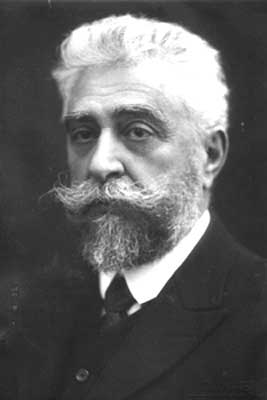
|
Ion I.C. Bratianu
|
The 1878-1914 period was one of stability and progress for Romania. Politics got polarised around two huge parties - the conservative one (Lascar Catargiu, P.P. Carp, Gh. Grigore Cantacuzino, Titu Maiorescu, a.o.) and the liberal one (Ion C. Bratianu, Dimitrie A. Sturdza, Ion I.C. Bratianu, a.o.). They alternatively came to power and this became the characteristic trait of the epoch's politics. The expansionist policy of Russia determined Romania to sign in 1883 a secret alliance treaty with Austria-Hungary, Germany and Italy; the treaty was renewed periodically until World War I. After staying neutral in the first Balkan war (1912-1913) Romania joined Greece, Serbia, Montenegro and Turkey against Bulgaria in the second Balkan war. The peace treaty of Bucharest (1913) marked the end of that conflict and under its provisions Southern Dobrudja - the Quadrilateral (the Durostor and Caliacra counties) became part of Romania.
In August 1914, when World War I broke out, Romania declared neutrality. Two years later on August 14/27, 1916 it joined the Allies, which promised support for the accomplishment of national unity; the government led by Ion I.C. Bratianu declared war on Austria-Hungary.
After the first success, the Romanian army was forced to abandon part of the country, Bucharest included and to withdraw to Moldavia, owing to the joint offensive of the armies in Transylvania, commanded by General von Falkenhayn and those of Bulgaria, commanded by Marshal von Mackensen. In the summer of 1917, in the great battles of Marasti, Marasesti and Oituz, the Romanians aborted the attempt made by the Central Powers to defeat and get Romania out of the war by occupying the rest of her territory.
|
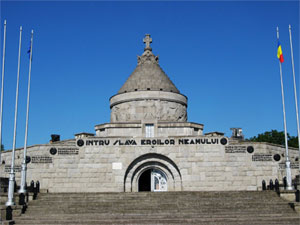
|
| Romanian troops at Marasesti in 1917 | The Marasesti Monument dedicated to the heroes of WWI |
But the situation changed completely following the outbreak of the revolution in Russia (1917) and the separate peace concluded by the Soviets at Brest-Litovsk (March 3, 1918); this triggered the end of the military operations on the eastern front. Romania was compelled to follow in the steps of her Russian ally, because on the Moldavian front the Romanian troops were interspersed with the Russian ones and it was impossible for combat to continue on one area of the front and for peace to settle on another front area, and so on. Cut off from its western allies, Romania was forced to sign the peace treaty of Bucharest with the Central Powers (April 24/May 7, 1918). The ratification procedure was never carried through, so from the legal standpoint the treaty was never operative; in fact, in late October 1918, Romania denounced the treaty and re-entered the war.
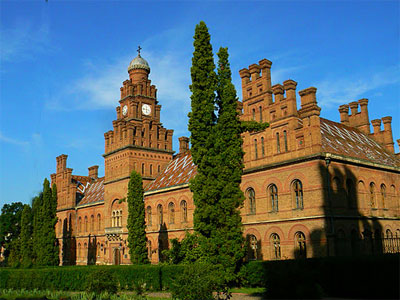
|
where the union of Bukovina with Romania was voted (November 28, 1918) |
The right of the peoples to self-rule triumphed in the final stage of World War I and this served the cause of the Romanians who lived in the Czarist and Austro-Hungarian Empires. The collapse of the czarist system and the recognition by the Soviet government of the right of the exploited peoples to self-rule allowed the Romanians in Bessarabia to express through the vote of the national representative body - the Country Council which convened in Chisinau - their will to be united with Romania (March 27/April 9, 1918). The fall of the Hapsburg monarchy in the autumn of 1918 made it possible for the nations that had been under Austrian-Hungarian oppression to emancipate themselves. On November 15/28, 1918, the National Council of Bukovina voted in Cernauti to unite that province to Romania.
In Transylvania the National Assembly called at Alba Iulia on November 18/December 1, 1918 voted, within the presence of over 100,000 delegates, to unite Transylvania and Banat with Romania. So, in January 1919, when the peace conference was inaugurated in Paris, the union of all Romanians into one single state was an accomplished fact.
The international peace treaties of 1919-1920 signed at Neuilly, Saint-Germain, Trianon and Paris, established the new European realities and also sanctioned the union of the provinces that were inhabited by Romanians into one single state (295,042 square kilometres, with a population of 15.5 million).
The universal suffrage was introduced (1918), a radical reform was applied (1921), a new Constitution was adopted - one of the most democratic on the continent (1923) - and all this created a general-democratic framework and paved the way for a fast economic development (the industrial output doubled between 1923 and 1938). With its 7.2 million metric tons of produced oil in 1937, Romania was the second largest European producer and number seven in the world. The per capita national income reached $94 in 1938 as compared to Greece - $76, Portugal - $81, Czechoslovakia - $141, and France - $246.
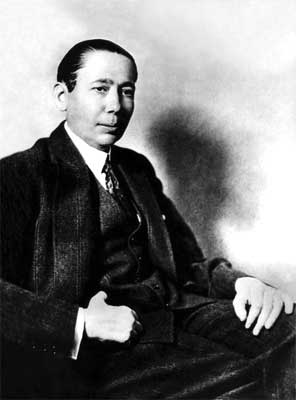
|
Supporter of collective security in Europe |
In politics many parties competed with one another, so the government was controlled over the years by several of them: the People's Party (Alexandru Averescu), the National Liberal Party (Ion I.C. Bratianu, I.G. Duca, Gheorghe Tatarescu) and the National Peasant Party (Iuliu Maniu). The Romanian Communist Party, established in 1921, and which had an insignificant number of members, was banned in 1924. The Iron Guard, an extremist right-wing nationalist movement, established by Corneliu Zelea Codreanu in 1927, was equally banned. In 1930 Carol II changed his mind about his earlier decision to give up the throne, he dethroned his minor son, Michael (who had become king in 1927) and he took the throne. Eight years later he established his personal dictatorship (1938-1940).
The goals of the foreign policy in the inter-war period, when Nicolae Titulescu played a major role, sought to maintain the territorial status quo by creating regional alliances, supporting the League of Nations and the collective security policy, as well as by promoting close co-operation with the Western democracies - France and Great Britain.
With Czechoslovakia and Yugoslavia, Romania lay the foundation in 1920-1921 for the Little Entente and in 1934 Romania created with Yugoslavia, Greece and Turkey a new organisation of regional security - the Balkan Entente.

